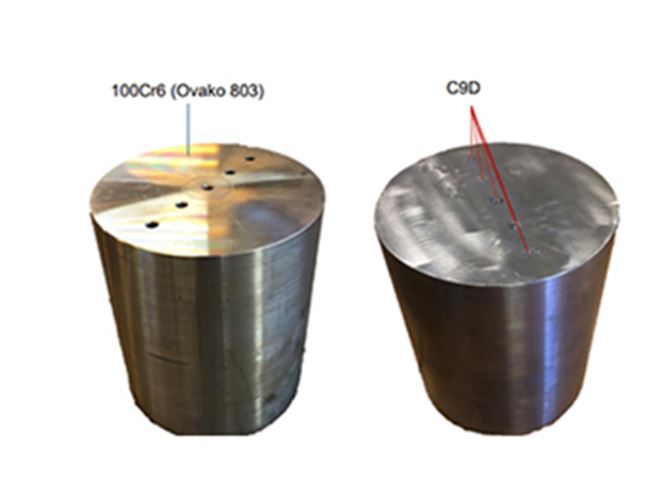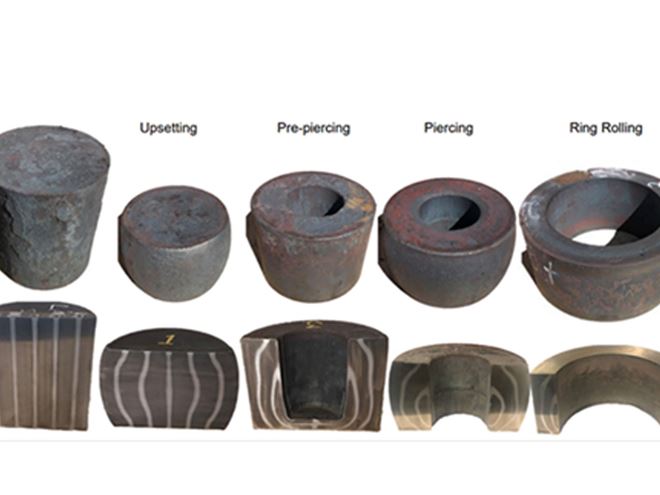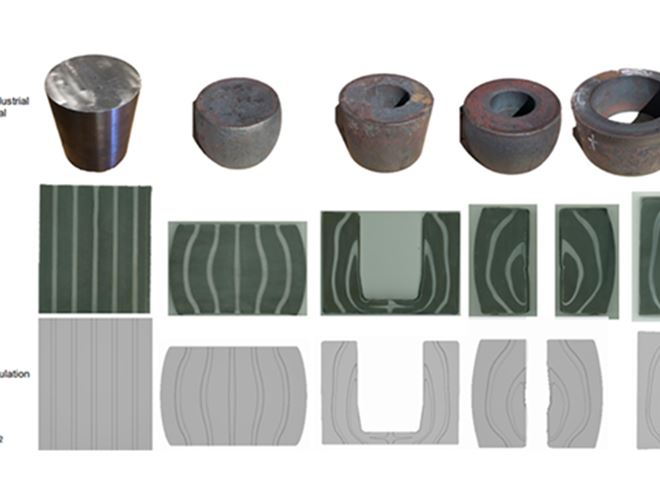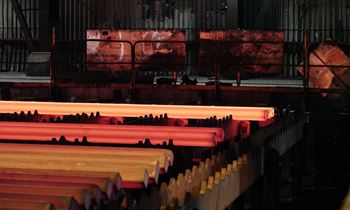Hot working plays an important role in improving the properties of steel components. If we could find out exactly how the metal flows, it would be a great help in refining the process to achieve even better results. But that would mean seeing inside the workpiece – impossible surely? Yet now it has been made possible through an elegant, practical approach to flow visualization developed by Ovako’s R&D team. What is especially important is that the results show an almost perfect correlation with our computer simulations.
Forging, and other hot working processes, changes the shape of a steel workpiece. However, it also performs another vital role in improving the steel’s properties by breaking down its cast structure, closing porosity and redistributing segregated elements. This gives enhanced strength, fatigue life and impact resistance. Achieving the correct flow of the steel grains is vital to achieve the optimum benefit. That is why we are so keen to visualize hot working.
The flow visualization process starts by taking a series of workpieces, such as the 100Cr6 (Ovako grade 803) sample shown in Figure 1, as the starting point for ring rolling. We then drill a number of holes right through them. Into these holes we insert closely fitting rods made of a dissimilar steel, in this case C9D, that we use as “markers”.

The samples are put through each stage of the hot working process and then cut into sections. Polishing and etching of samples taken from each stage reveals a clear distinction between the main body of the steel and the marker rods. That enables us to see how the metal has flowed, as shown in Figure 2.
In parallel with this practical method, Ovako’s R&D team has also been developing computer simulations of metal flow using our FORGE finite element method (FEM) software. These simulations show an almost perfect correlation with the real-life industrial trials as seen in Figure 3.
Figure 2: The contrast between the main body of the steel and the inserted rods shows how the material has flowed in each process stage

Figure 3: There is an almost perfect correlation between the practical tests (top) and simulation (bottom)

In addition to ring rolling, we have also applied the same practical approach to forging and rolling processes. We are planning to apply the technique to tube rolling.
While there are many external checks that can be made on the quality of a hot-worked product, such as temperature, surface finish and dimensional accuracy, they do not tell us what has happened inside it. The situation has changed with the development of this elegant new approach that enables us to gain a deeper understanding of how metal flows under hot working. It will play a vital role in refining our processes to deliver the highest quality products to our customers. Furthermore, because this new visualization method shows such good correlation with our FORGE FEM simulations it gives us greater confidence in using FEM for process optimization.

